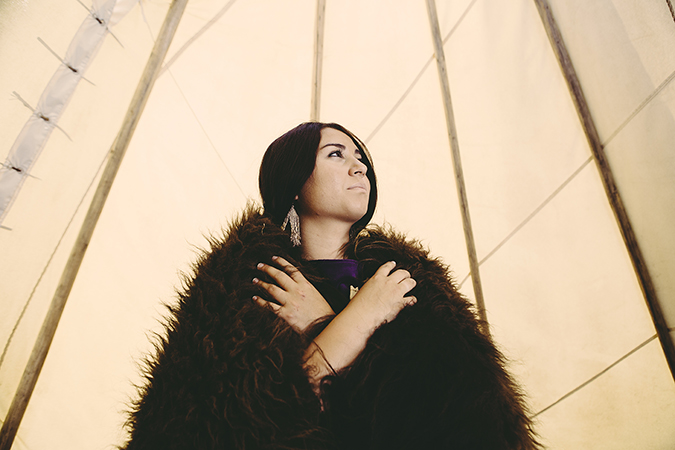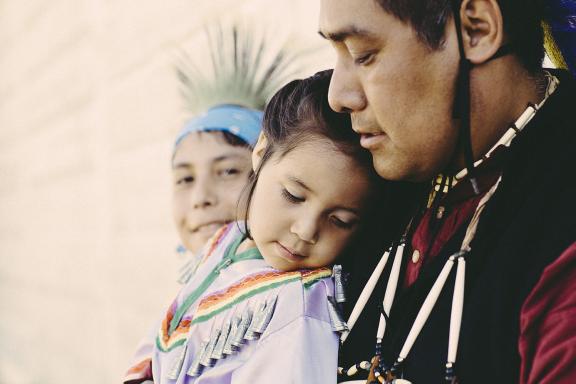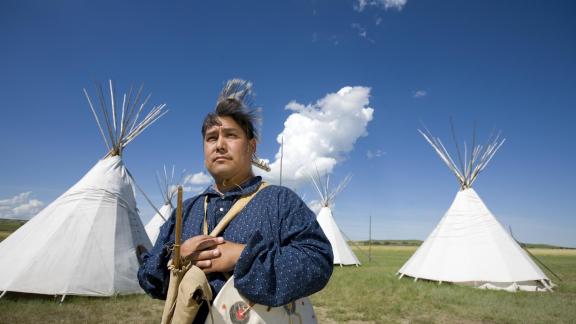North Dakota Native American Heritage
The Native Americans of North Dakota share an understanding of humankind’s relationship with nature.

There are approximately 30,000 Native Americans living in North Dakota and they make up about 5% of North Dakota's current population. North Dakota Native American tribes span the Mandan, Hidatsa, Arikara, the Yanktonia, Sisseton, Wahpeton, Hunkpapa and other Dakotah/Lakotah (more commonly known as the Sioux) Tribes, along with the Pembina Chippewa, Cree and Metis.
Though the individual tribes have distinct and different origins, histories and languages, Native Americans are united by core beliefs and values that emanate from respect for the earth and an understanding of humankind’s relationship with nature. Just as the name “Dakota” means “friend or ally” in the Lakota language, the hand of friendship and hospitality is extended to you as you journey here to explore the tribal lands and discover the beauty of Indian culture.
The Sisseton-Wahpeton Oyate Tribe is comprised of about 11,300 enrolled members and enlisted in a traditional lifestyle that included hunting by males and various chores by females, such as gathering wild rice, cooking, tanning skins, repairing clothes and cutting wood. The tribe lived in elk or buffalo hide tepees after migrating to North Dakota and their tribal lands encompasses 110,000 acres of North Dakota and South Dakota.
The Spirit Lake Nation is comprised of Dakotah/Lakota people, including Sisseton, Wahpeton and Yanktonai tribes. Their traditional lifestyle was nomadic and consisted of hunting bison, fishing and farming along rivers and residing in tepees. There are currently 4,300 enrolled members, with many tribal members living on Fort Totten Reservation.
Comprised of Lakota, Dakotah and Nakotah nations, Standing Rock Nation's traditional lifestyle was nomadic and included hunting bison and residing in tepees. The tribe was greatly influenced by the spread of the Northern Plains horse culture in the late 17th century. Today, Standing Rock Nation encompasses 2.3 million acres with 13,900 enrolled members.
MHA Nation (Three Affiliated Tribes)
Comprised of the Mandan, Hidatsa and Arikara nations, these tribes traditionally farm corn, beans, squash and sunflowers. Tribal members typically lived in semi-permanent earthlodges. The Mandan people were nearly wiped out by the smallpox epidemic of 1786. Only about 1,250 Mandans remained at the time the Corps of Discovery arrived. Smallpox devastated the Mandan again from 1837 to 1840.
The Hidatsa population was estimated by the Lewis and Clark Expedition to be about 2,100, including 600 warriors, and the Arikara population was estimated to be about 2,600. Estimates put the population at about 30,000 before smallpox arrived 20 years earlier.
The three tribes united in 1862 in Like-A-Fishhook Village on the Missouri River. Many tribal members have lived on Fort Berthold Reservation since 1870 and there are 10,400 current tribal members.
Turtle Mountain Band of Chippewa
Comprised of 29,161 members, of which 13,000 live on or near the Turtle Mountain Reservation, the Turtle Mountain Band of Chippewa migrated to the area from the Great Lakes region in the late 1400s. The population for the entire Chippewa Nation in 1764 was 30,000 and agriculture was their traditional means of support. The Turtle Mountain Reservation was established in 1882.
Click here for Native American Culture
Click here for more information on Native Americans of North Dakota




